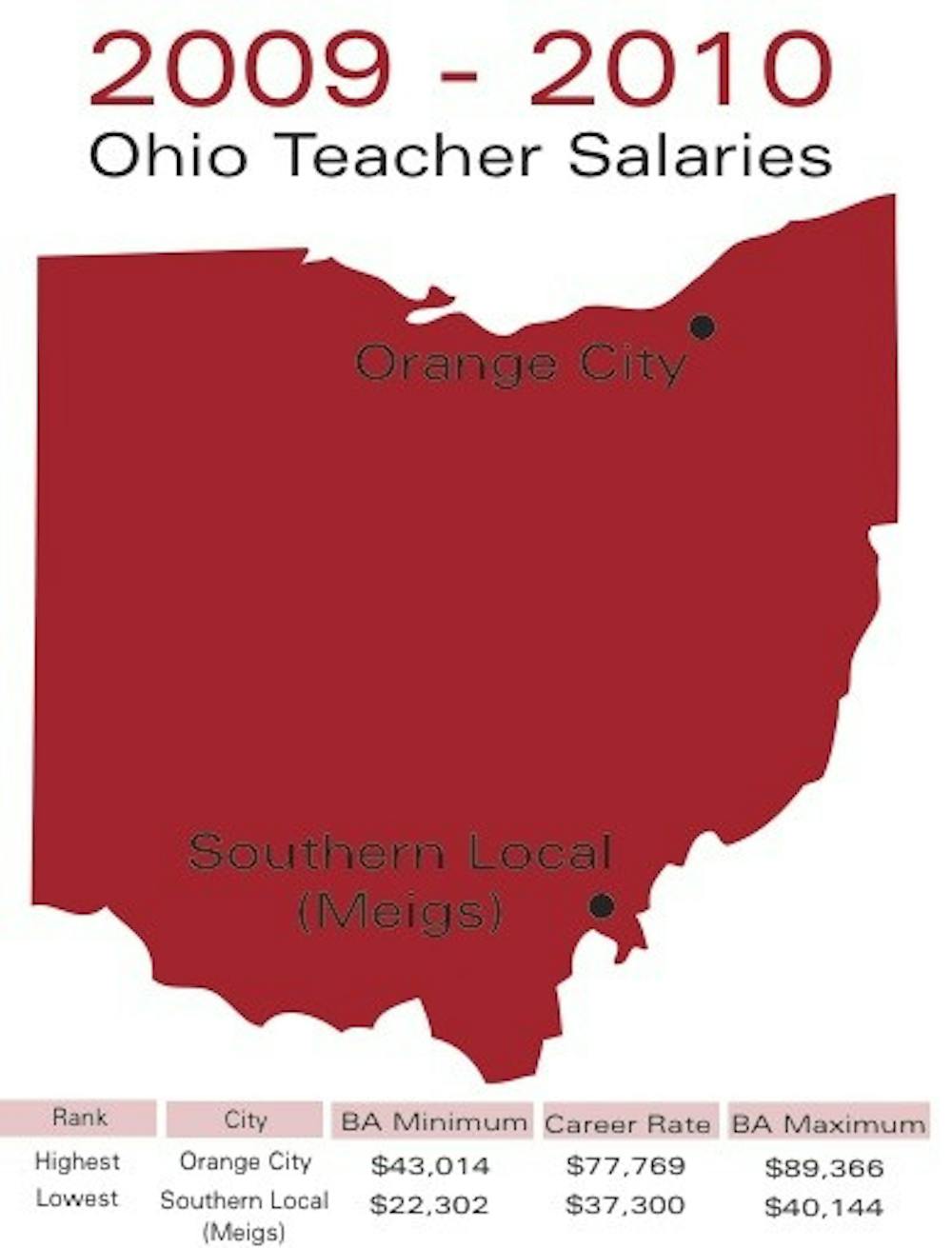
(ERIN KILLINGER | The Miami Student)
Salaries for Ohio teachers vary greatly across the state, according to a recent list published by Ohio Schools Magazine. While teachers in some regions of Ohio earn upwards of $90,000 per year, others barely top $20,000, figures that could prove alarming given the financial predicament local school districts face.
Scott Blake, press secretary for the Ohio Department of Education, acknowledges the pay disparity among teachers in Ohio; however, he said the state plays little role in determining teachers' salaries.
"There is a state law that sets out a minimum salary level," Blake said. "But (districts) can go above and beyond as they see necessary."
Aside from adhering to a minimum salary level, each district determines its own level of compensation, a common misunderstanding, according to Blake.
"The Department of Education has no authority in setting teachers' salaries in any individual district," Blake said. "Unions negotiate the salary schedule with their boards…but as the Department of Education, we don't determine (salary levels)."
While districts may determine individual salary levels, other factors influence the pay scale for Ohio's teachers.
Scott Ebright, deputy director of communication services for the Ohio School Boards Association, said while there is a minimum salary of around $22,302, cost of living and other such factors help determine how much educators are paid in a given district.
A higher cost of living usually boils down to more tax dollars, giving districts the ability to pay higher salaries.
"Each board of education will have a negotiation with the union representing their district to set the salary schedule," Ebright said. "Those unions are the Ohio Education Association and the Ohio Federation of Teachers."
Ebright said school districts fall into two categories, urban and high performing suburban districts, whereby external factors influence a community's ability to pay teachers' salaries.
Enjoy what you're reading?
Signup for our newsletter
"In areas of high unemployment, the cost of living is less and there is less tax revenue coming in," Ebright said. "It all boils down to economics and what the community can afford."
As mass layoffs and budget cuts plague local school districts, education majors at Miami University are cautious about what the future holds for teachers in Ohio.
Kaely Phillips, a sophomore majoring in education, is troubled by the large disparity in teachers' salaries.
"It is off-putting to see that some educators make so much while others make next to nothing," Phillips said. "All educators face similar obstacles and they should be paid accordingly."
However, Ebright said teachers have the ability to move up the pay scale based on a state law mandating 12 steps that increase based on longevity, experience and education.
"If you can imagine, across the top of the spreadsheet you have steps," Ebright said. "The first would be 0, the next a Bachelor's degree, Master's degree, et cetera. A brand new teacher starts out at a BA (Bachelor's) 0, the base salary. As you go each year, you gain a year of experience and a year of salary over the base."
While schools will often pay a teacher to further their education, Ebright said a district's ability to pay will attract the best and brightest educators, leading some to believe an inequality exists.
Ultimately, Ebright said asking why some teachers make more than others is a very simple question with no simple answer.
To view contracts of the state or salary schedules, visit http://www.erb.state.oh.us.




